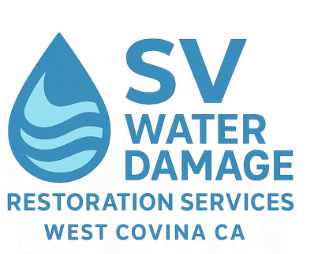When water damage occurs, whether from a burst pipe, a leaking roof, or a natural flood, the immediate concern is often the visible water. However, water can seep into walls, floors, and other structural elements, causing hidden damage. This is where structural drying becomes critical. It is a specialized process designed to remove moisture from these building materials, protecting the property from further harm.

What is Structural Drying?
Structural drying is the process of drying out the parts of a building that hold it up and make it sturdy. This includes materials like drywall, wood framing, insulation, and concrete. Simply airing out a room or using fans might dry the surface, but it often leaves moisture trapped inside the structure. When this happens, problems can arise later on. Specialized equipment is used to measure moisture levels and then remove the hidden water.
Why is Structural Drying Important?
Leaving moisture in a building’s structure can lead to serious issues. One of the biggest concerns is mold growth. Mold can start to grow within 24 to 48 hours in damp conditions, causing unpleasant odors and potentially affecting air quality. Untreated moisture can also weaken wooden beams, floors, and other materials, leading to costly repairs down the line. Proper structural drying helps prevent these problems, protecting the building’s integrity and the health of its occupants. It helps ensure that the building remains safe and sound.
The Process of Structural Drying
The process of structural drying involves several key steps carried out by trained professionals.
- Assessment: First, the affected areas are carefully checked using special tools to find all the places where water has spread, even behind walls or under floors. Moisture meters and thermal imaging cameras are often used for this.
- Water Extraction: Any standing water is removed quickly using powerful pumps and vacuums. This is a crucial first step to speed up the drying process.
- Dehumidification: Industrial-grade dehumidifiers are brought in to remove moisture from the air. This helps to draw out water from the building materials.
- Air Movement: High-powered air movers are used to create airflow across wet surfaces. This helps to evaporate moisture more quickly.
- Monitoring: Throughout the process, moisture levels in the structure are regularly checked. This ensures that the building materials are completely dry before the equipment is removed. The goal is to return moisture levels to their normal, pre-damage state.
When is Structural Drying Needed in West Covina, CA?
Residents and businesses in West Covina, CA, might need structural drying services after various water-related incidents. This service is often required following:
- Burst pipes or plumbing leaks that cause significant water overflow.
- Flooding from heavy rains or natural disasters.
- Appliance malfunctions, such as washing machine overflows or refrigerator leaks.
- Roof leaks that allow water to enter ceilings and walls.
In any of these situations, acting quickly is important to minimize damage and prevent long-term issues.
Choosing a Professional for Structural Drying West Covina CA
When dealing with water damage, it is wise to choose a professional service for structural drying. Experts have the right equipment and knowledge to handle the situation effectively and safely. They understand how different building materials respond to moisture and can ensure that the drying process is thorough. For effective Structural Drying West Covina CA, selecting a team that is experienced and reliable is key to restoring your property properly.




